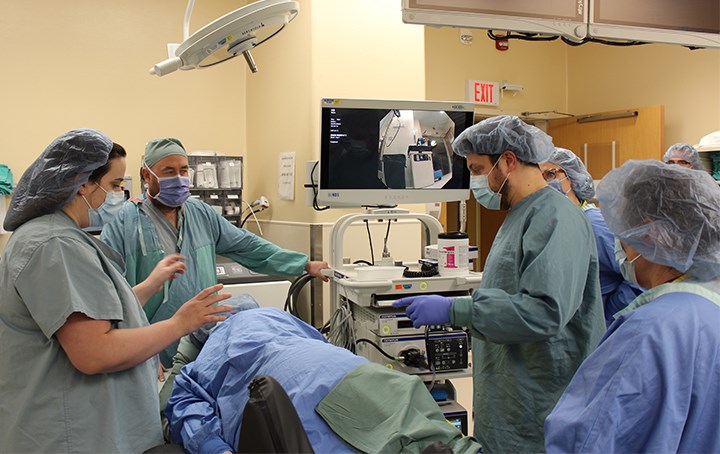Journal staff
Bluewater Health’s surgery program is investing in technology and specialty services to keep care closer to home, the hospital announced this week.
Patients experiencing gallstones and acute pancreatitis can now be treated locally, thanks to a new procedure called Endoscopic Retrograde Cholangiopancreatography (ERCP).
Previously, patients admitted to the hospital’s emergency department for acute symptoms impacting their liver, pancreas, gallbladder and bile ducts had to travel to London for the non-elective surgery.
Last month, staff from Bluewater Health’s operating room, endoscopy and diagnostic imaging departments took part in mock procedures with the new equipment, led by general surgeon and specialist, Dr. Colin Way. The first non-elective procedure became available to local patients in early February.
“We look after many patients who need access to this service and it was important to us that we could offer that procedure here in Sarnia-Lambton,” said chief of staff, Dr. Michel Haddad.
“Physicians are required to have specialized training in ERCP to perform this procedure, and so we are thrilled to have Dr. Way settled in Sarnia to provide his specialty services locally.”
The ERCP procedure combines upper gastrointestinal endoscopy and x-ray to treat problems of the bile and pancreatic ducts. The hospital invested in new, speciality equipment, including a camera-mounted endoscope and video image monitor.
In 2021-22,145 Lambton residents had to travel to London for the procedure, during which patients are sedated while a physician carefully feeds the endoscope down the esophagus, through the stomach, and into the duodenum.
A small camera sends a video image to the monitor, while air is pumped into the stomach and duodenum, making it easier for the care team to see.
The procedure is done to open blocked or narrowed ducts, break up or remove stones, perform a biopsy or remove tumors, and to insert stents.
The procedure commonly takes between one and two hours, the hospital noted, adding that most patients can return home same day.
